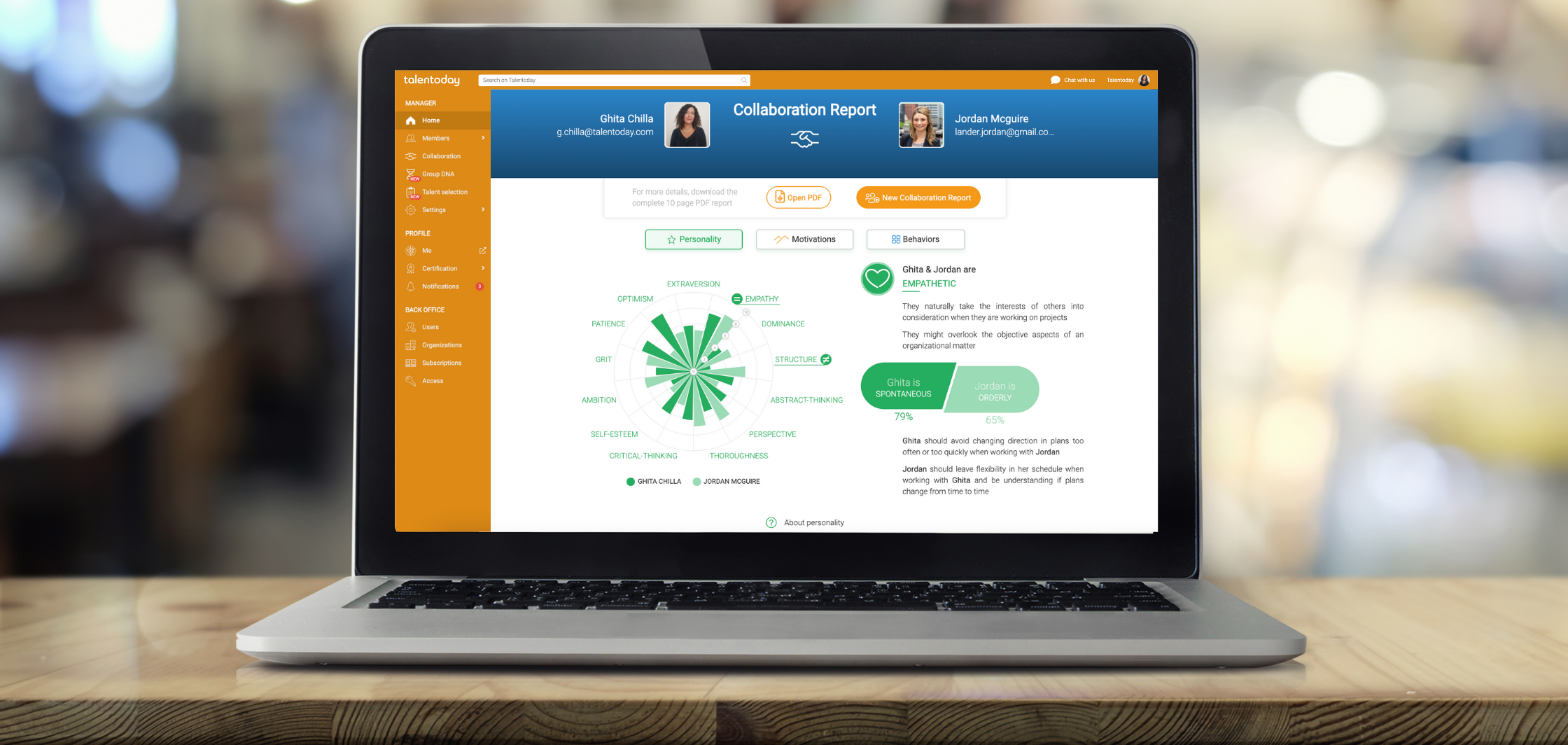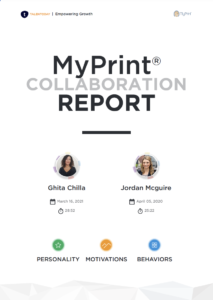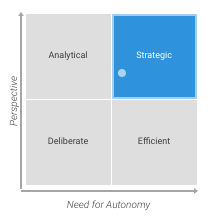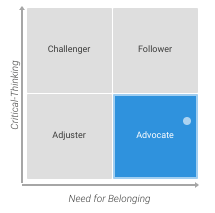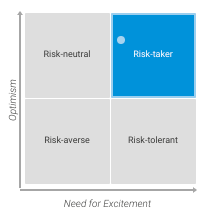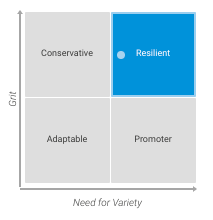Medix Case Study: 68.9% Decrease in New Hire Turnover
Medix implemented the use of MyPrint into our onboarding programs and we’ve seen a positive impact on how we get to know our newest teammates. From personality styles to motivators, the MyPrint Collaboration Report has helped our new hires cultivate strong team relationships, leading to higher levels of engagement, retention and success in their new roles.
– Megan Steiger, VP of Human Resources.
.
THE CHALLENGE: NEW HIRE TURNOVER
With a higher than desired turnover rate for new employees in the first 90 days, Medix turned to Talentoday to determine how to better use soft skills data to reduce turnover rates.
THE SOLUTION: INNOVATION WITH COLLABORATION
With HR working as a strategic business partner, Medix was able to empower managers and their direct reports to have enhanced collaboration with soft-skills data. Medix’s HR team implemented proactive collaboration sessions between managers and new hires based on Talentoday’s Collaboration Report, a 1:1 report designed to compare two individuals’ similarities and differences. The report provides guidance on how they can work better together better based on their unique MyPrint results. By implementing these sessions as proactive and voluntary, the buy-in is high among internal employees.
With HR acting as the facilitator, the manager and new hire are able to use the report to talk through examples that can help motivate them, and what discourages them, empowering engagement to work together towards business goals.
THE RESULT: A 68.9% DECREASE IN NEW HIRE TURNOVER
As a result, Medix saw a significant increase in employees staying with the organization past the first 90 days of employment. In fact, the organization experienced a 68.9 percent decrease in new hire turnover!
.
ABOUT THE CLIENT
Medix, a US-based staffing organization, has been pioneering staffing and digital services over the past twenty years. Being a purpose-led organization, Medix is guided by their core purpose to positively impact lives. In putting people at the heart of what they do, they take an innovative position as both an employer and staffing provider of choice by leveraging soft-skills insights as part of their holistic employee, talent, and client experience.
Since 2018, Medix has been leveraging Talentoday’s soft-skills assessment, MyPrint, and its personality, motivation and behavioral insights as part of their service offering to both talent and clients. Additionally, Medix designated an internal HR representative to champion MyPrint initiatives and infuse people analytics even further into Medix’s employee culture.
Ready to start your transformative Talentoday success story?
Behaviors Uncovered: Decision Making, Rule Consciousness, Risk Orientation and Change Reaction
So far, our Behaviors Uncovered series has explored seven total areas of observable actions made by individuals in conjunction with their work environment. Part one focused on Leadership Style, Communication Style, Conflict Management and Team Contribution. In part two, we highlighted Creativity, Work and Learning Styles; these are the behavior patterns that shape the ways individuals expand their knowledge base and work together to invent in the workplace. In this third and final entry in our series, the ways in which individuals relate to organizational structure and make choices take center stage. It’s time to uncover the science behind Decision Making, Rule Consciousness, Risk Orientation and Change Reaction.
As with the first two entries in this series, key information in the following descriptions is drawn from the Talentoday MyPrint® questionnaire. The behavioral dimensions found within the assessment are displayed as score matrices resulting from the combination of personality and motivational results. In short, our behavioral styles are predicted based on the scores (high or low) that an individual has obtained on these two dimensions crossed together. Think of these analytical grids as a way to gain a deeper understanding of why an individual prefers and maintains a particular pattern of actions.
Decision Making
When you start adding up the total number of decisions we make in the workplace on a daily basis, the results can be truly staggering. From soft balls like, “Hot coffee or iced coffee?” to everyday preferences like, “Does this request warrant a meeting or will an email suffice?” employees are constantly faced with choices to make. Eventually, some of these decisions can have a major impact on an organization. Having an idea of how an individual might go about this process can be key when building the right team for your goals.
Decision Making can be described as the set of processes, either intuitive or reasoned, by which an individual ends up choosing between two or more courses of action.
There are four ways individuals can approach decision making, derived from the “Perspective” dimension of personality and the “Need for Autonomy” dimension of motivation:
- Analytical (Big Picture, Need for Support): Individuals who are Analytical decision makers tend to consider multiple points of view in order to frame a situation very broadly.
- Strategic (Big Picture, Need for Self-Reliance): Individuals who are Strategic decision makers rely on their own assessment of a great deal of information to build solutions that stand the test of time.
- Deliberate (Focused, Need for Support): Individuals who are Deliberate decision makers consider just enough input from others to make a plan, but are ready to quickly adapt to the situation if need be
- Efficient (Focused, Need for Self-Reliance): Individuals who are Efficient decision makers value efficiency. They make up their minds quickly and move on to the next decision.
Rule Consciousness
How does your team approach structure? Any leader that has attempted to manage each employee with the same meeting schedule, expectations and firmness knows that, when it comes to workplace rules, it’s never truly one-size fits all. Rule Consciousness can be summarized as the way an individual interprets, judges and reacts to the organizational rules in place.
There are four behavior types when it comes to rule consciousness, derived from the “Critical Thinking” dimension of personality and the “Need for Belonging” dimension of motivation:
- Challenger (Critical-Thinker, Need for Freewill): Individuals who are Rule Challengers evaluate the rules and norms that are in place with great objectivity, and might choose their own way of doing things.
- Follower (Critical-Thinker, Need for Affiliation): Individuals who are Rule Followers go along with the rules, as it is a way for them to feel connected to others.
- Adjuster (Conventional-Thinker, Need for Freewill): Individuals who are Rule Adjusters are likely to try to bend the rules they strongly disagree with, or adjust them to their advantage.
- Advocate (Conventional-Thinker, Need for Affiliation): Individuals who are Rule Advocates show a strong respect for authority, and promote the existing rules or norms of any organization they belong to.
Risk Orientation
The decision to take a leap of faith in the workplace can be a stressful one for many employees. This takes rook in the ways that employees approach risk. Risk Orientation can be described as the way an individual invests energy in response to perception of significant uncertainty, namely in seeing either the opportunities or the obstacles. In some cases, a career defined by taking bold action can be beneficial. In other situations, a more conservative approach may be more warranted. Determining the outlooks held by members of a given team can help managers better chart the direction and pace the organization should be taking in order to maintain team confidence.
There are four ways an individual can approach risk, derived from the “Optimism” dimension of personality and the “Need for Excitement” dimension of motivation:
- Risk-neutral (Positive, Need for Safety): Individuals who are Risk-neutral strive to minimize their uncertainty by searching for the most rational solution.
- Risk-taker (Positive, Need for Adventure): Individuals who are Risk-takers expect positive outcomes from risky opportunities, making them typically go for them in order to maximize the gains.
- Risk-averse (Apprehensive, Need for Safety): Individuals who are Risk-averse focus on negative outcomes in risky opportunities, which typically makes them avoid them and choose safe alternatives.
- Risk-tolerant (Apprehensive, Need for Adventure): Individuals who are Risk-tolerant are open to deal with risky situations as long as they can determine solutions that reduce their potential losses.
Change Reaction
Change Reaction can be described as the typical response of an individual to the unexpected events or situations arising in their environment of work. Considering that a recent survey of half a million U.S. employees discovered that almost one-third of them do not understand why organizational changes are happening at any given time, it’s clear that employers need to do better when implementing change. One way to get there is by better anticipating the ways in which individuals might react when confronted with the news of adjustments to the workplace and processes.
Change reaction can be broken down into four possible patterns, derived from the “Grit” dimension of personality and the “Need for Variety” dimension of motivation:
- Conservative (Determined, Need for Consistency): Individuals who are Conservative in their reaction to change need to be convinced of the necessity of changes prior to overcoming them.
- Resilient (Determined, Need for Diversity): Individuals who are Resilient in their reaction to change tend to recover from changes by finding new ways of reaching their initial goals.
- Adaptable (Opportunistic, Need for Consistency): Individuals who are Adaptable in their reaction to change quickly adapt to changes occurring in processes, since they may represent an opportunity to adjust their goals.
- Promoter (Opportunistic, Need for Diversity): Individuals who are Promoters of change enjoy celebrating new events, and they typically welcome
If recent events have taught us anything, it’s that workplaces of all kinds need to be ready to tackle tough decisions and major transformations at any given moment. To navigate these fluctuations with skill, it pays for employers to have a deep understanding of the ways in which the individuals on their team approach the decision making process, rule consciousness, risk orientation and react when confronted with change.
When taken together with the personality and motivation dimensions of the MyPrint assessment, uncovering the behaviors of the individuals on your team can help you unlock the true potential hiding just under the surface.
Interested in uncovering more about how behavior profiles can help you understand how someone will act in a professional setting? Discover the science behind MyPrint by clicking here.
Race to Reshape Your Dream Team
As organizations anticipate post-pandemic life, business leaders are assessing their talent management challenges, looking to (re-)build a dream team and optimize performance. Companies are competing to hire top talent.
The workplace terrain has changed, and employers need to navigate the new normal of virtual work. Do you have who and what you need for your organization to be successful?
Talentoday offers insight into what to consider when building and shaping your team
- Use our checklist to shape your dream team.
- Get our coach’s guide on characteristics and traits to look for when hiring new employees in a remote work environment.
- Gain insight into how soft skills can help in hiring and motivating your team.
- Learn what traits support innovation, strategic thinking and problem solving.
- Find tips on cultivating an inclusive culture.
Click here to download our new infographic today!


